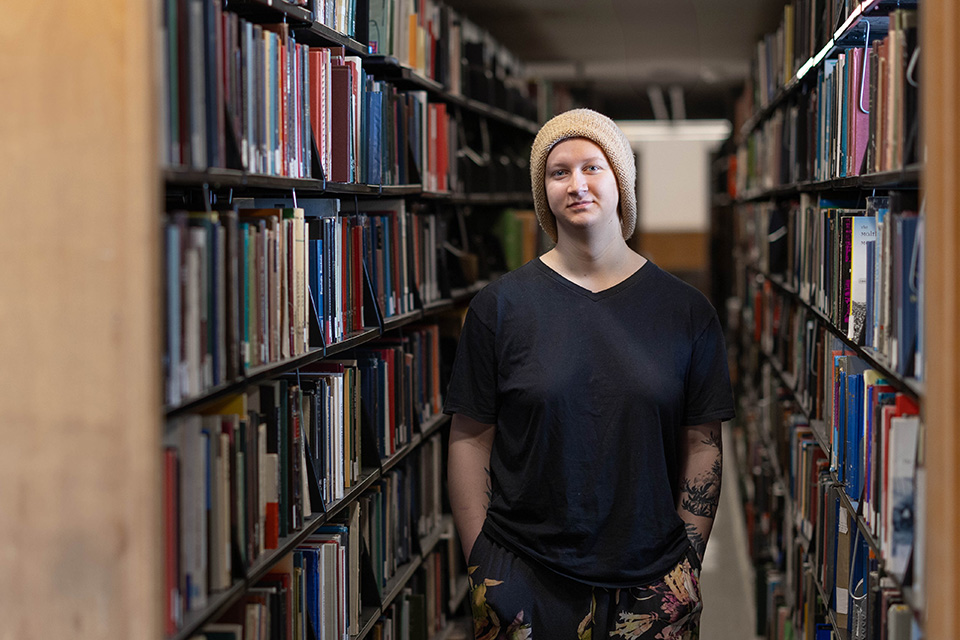Brandeis University Admissions
Exploring the Rhythm of Jazz Poetry

Noa C. ’27
(she/her)
Noa has always been fascinated by the intersection of music, language and race. This passion led her to study jazz poetry — a genre in which poetry’s rhythms and cadences merge seamlessly with musical improvisation.
Through an in-depth research project, “Rhythm, Accent, Mood: The Jazz-Poetic Experiments of Jayne Cortez and Langston Hughes,” she is examining the works of two influential poets from the Harlem Renaissance and Black Arts Movement.
The Seattle native received an Undergraduate Research and Creative Collaborations grant last fall to fund her project, and has been mentored by assistant professor of theater arts Andie Berry.
“The first step was understanding what jazz poetry actually is,” Noa explained. “That meant exploring both music theory and literary theory — comparing what makes music different from poetry and what makes them similar. I also looked at jazz, blues, ragtime, spirituals, beat poetry and experimental poetry to understand the broader context.”
Throughout this process, Noa has honed her research skills. “This project has taught me how to filter vast amounts of information and focus on what’s most relevant,” she said. “I tend to want to include everything under the sun, but this has helped me be more concise and structured.”
And she credited Berry, her adviser, for guiding her through the research process. “We had great conversations about shaping my reading list and refining my approach,” said Noa, who also took advantage of Brandeis’ library archives, where she accessed original Langston Hughes materials, including a signed first edition.
Cortez’s poetry, Noa noted, is deeply rhythmic, playing with breath, syllables and syncopation. “She often deconstructs traditional meter, taking rigid, regulated rhythm and improvising on it,” Noa said. Hughes, on the other hand, creates a mosaic of sound and music in his book “Ask Your Mama: 12 Moods for Jazz,” which Noa described as “sheets of sound” that weave an emotional tapestry.
One of the central arguments in her research challenges the assumption that poetry is primarily a written form.
“I’m arguing that jazz poetry is primarily sonic,” she said. “Even when written on the page, its meaning is communicated through sound rather than just the definitions of words. If Cortez uses a word like ‘rooster,’ she’s not necessarily painting an image — she’s making a song out of the sound the word creates.”
Noa plans to pursue a PhD in literature, a path that will allow her to continue exploring the artistic traditions she finds so compelling.
“This project confirmed that I really love this kind of work,” she said. “I want to read, write, learn and talk about the things I find beautiful in art, music and literature.”
“I want to read, write, learn and talk about the things I find beautiful in art, music and literature.”
Noa C. ’27

